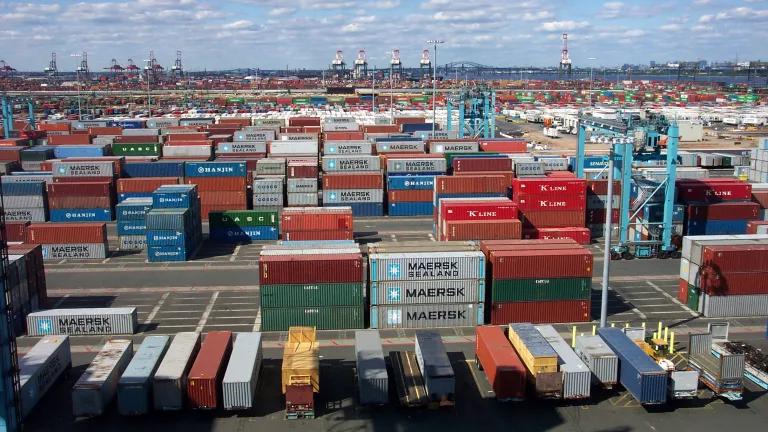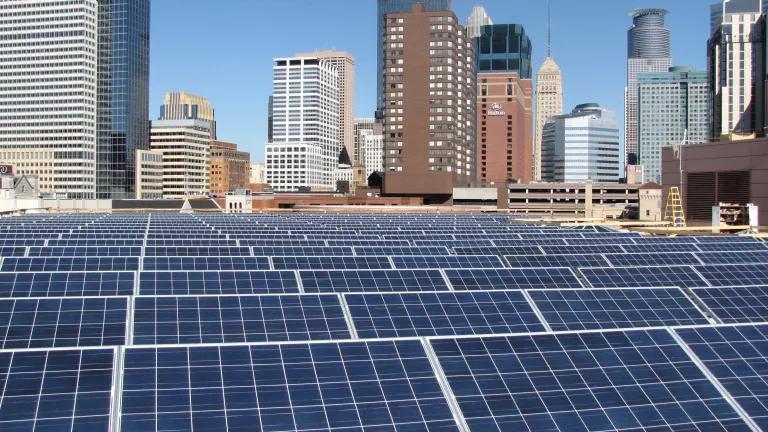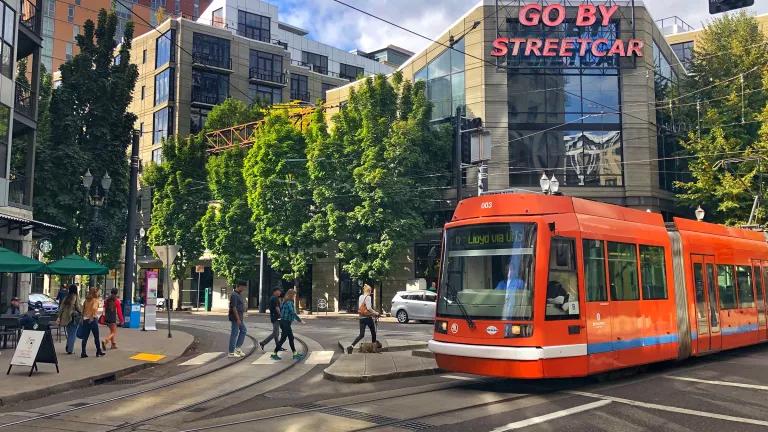A Zero-Emissions Future for U.S. Freight
The Biden administration set a national zero-emission freight goal, targeting cleaner air and climate leadership.

The Biden administration unveiled the first-ever national goal for a national zero-emissions freight system in April. This ambitious vision, backed by nearly $1.5 billion in new funding, aims to transition warehouses, trucks, ports, ships, trains, and planes to zero-emission technologies. The White House also committed to collaborating with other countries to enable zero-emissions medium- and heavy-duty vehicles to reach 30 percent of new sales in 2030 and 100 percent by 2040. This announcement represents a critical step in addressing climate change and air pollution, particularly in communities overburdened by our goods movement system.
Why Is a Zero-Emissions Freight Sector Important?
Freight transportation is a cornerstone of the U.S. economy, moving 55 million tons of goods worth more than $49 billion daily. However, this vital industry is also a significant source of pollution. Emissions from freight contribute to local air pollution and increase the risk of health problems such as asthma and heart disease, especially in communities near major freight routes. Furthermore, the transportation sector is the largest source of climate pollution in the U.S., with trucks and buses accounting for nearly 25 percent of these emissions. Transitioning to zero-emission technologies in the freight sector is essential for reducing these harmful impacts.
Key Components of the Announcement
- National Zero Emissions Freight Strategy: The administration’s new goal involves coordinated actions across federal agencies, including:
- A $1.5 billion investment into the zero-emission freight sector.
- Engagement with a wide array of stakeholders, including commercial fleets, vehicle manufacturers, state and local governments, and environmental justice organizations, to ensure community needs and concerns are addressed. This collaborative approach ensures a comprehensive transition to a zero-emission freight sector and considers the unique challenges faced by different communities.
- Action plans targeting air pollution hotspots and climate crisis mitigation.
- Major Funding Programs:
- EPA’s $1 Billion Funding Opportunity: This initiative, funded by the Inflation Reduction Act, aims to help school buses, delivery and garbage trucks transition to zero-emission technologies. It also includes support for charging infrastructure and workforce development.
- DOT’s $400 Million Port Emissions Reduction Program: Focused on improving air quality around port facilities, aiming to reduce pollution impacting truck drivers, port workers, and nearby communities.
- DOE’s $72 Million SuperTruck Charged Program: This program will demonstrate tight integration between electric trucks and the power grid to provide reliable and affordable charging at depots and truck stops.
Building on Existing Policies
The announcement from the White House builds on a series of initiatives already underway:
- Blueprint for Transportation Decarbonization: Released in January 2023, this blueprint outlines strategies for reducing emissions across all transportation segments.
- Zero-Emissions Freight Corridor Strategy: This strategy envisions the development of charging and hydrogen refueling infrastructure along major freight routes by 2040.
- Heavy-Duty Vehicle Regulations: New EPA standards aim to significantly reduce greenhouse gas emissions from heavy-duty vehicles.
The Moving Forward Network’s Leadership on Zero-Emission Freight
The recent White House announcement is a significant step forward, influenced by sustained advocacy from the Moving Forward Network (MFN), a national network of over 50 member organizations that centers grassroots, frontline-community knowledge, expertise and engagement from communities across the U.S. that bear the negative impacts of the global freight transportation system. Earlier this year, MFN and 23 endorsing organizations sent a letter to the White House urging a commitment to 100 percent zero-emissions across the freight transportation system and calling for a stakeholder-led process to achieve this goal. The new announcement reflects a whole-of-government approach and prioritizes the needs of overburdened communities.
A core component of the administration’s approach to a zero-emissions freight sector must be to advance environmental justice. Frontline and fenceline communities suffer from environmental racism due to historical and ongoing pollution from freight operations. This includes daily truck trips through neighborhoods, idling trains near homes, and emissions from ships and warehouses. The Justice40 Initiative, which ensures that 40 percent of the benefits from federal climate and clean energy investments reach underinvested communities, will be key to ensuring that critical investments are made in environmental justice communities.
Zero Means Zero
The U.S. has just set its first zero-emission freight sector goal, representing a much needed step toward cleaner air and a healthier climate. By investing in innovative technologies and infrastructure and prioritizing environmental justice, this vision puts us on a path to create a sustainable and equitable future for all Americans. Reaching this goal will not only improve public health but also position the U.S. as a global leader in combating climate change and promoting zero-emission solutions, setting an example for other nations to follow.



